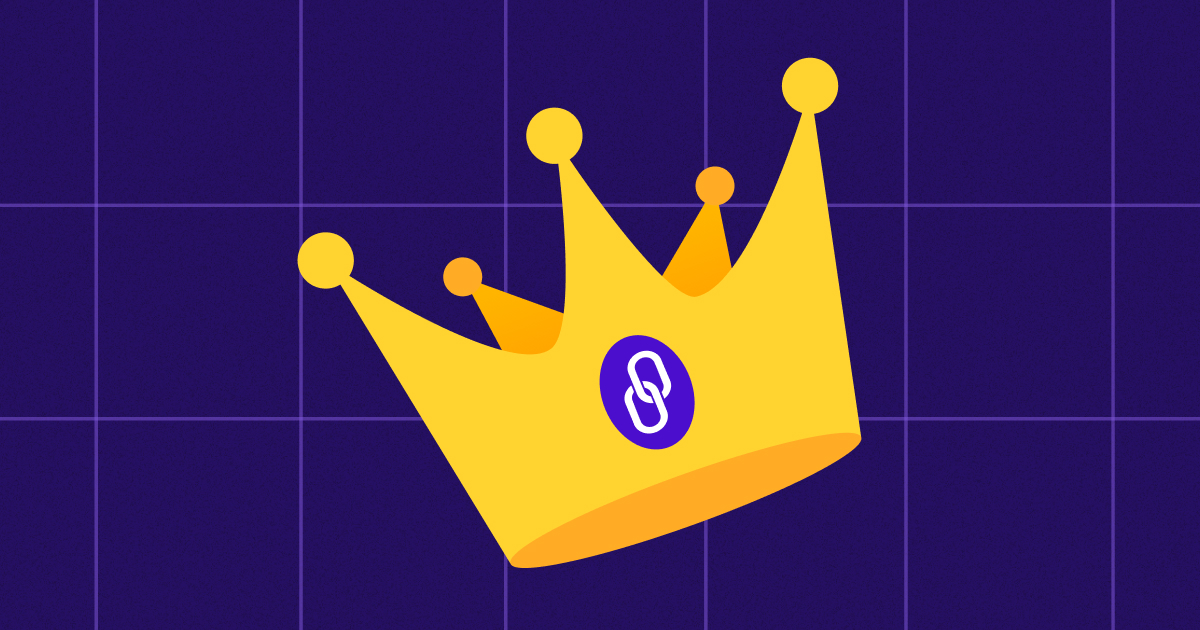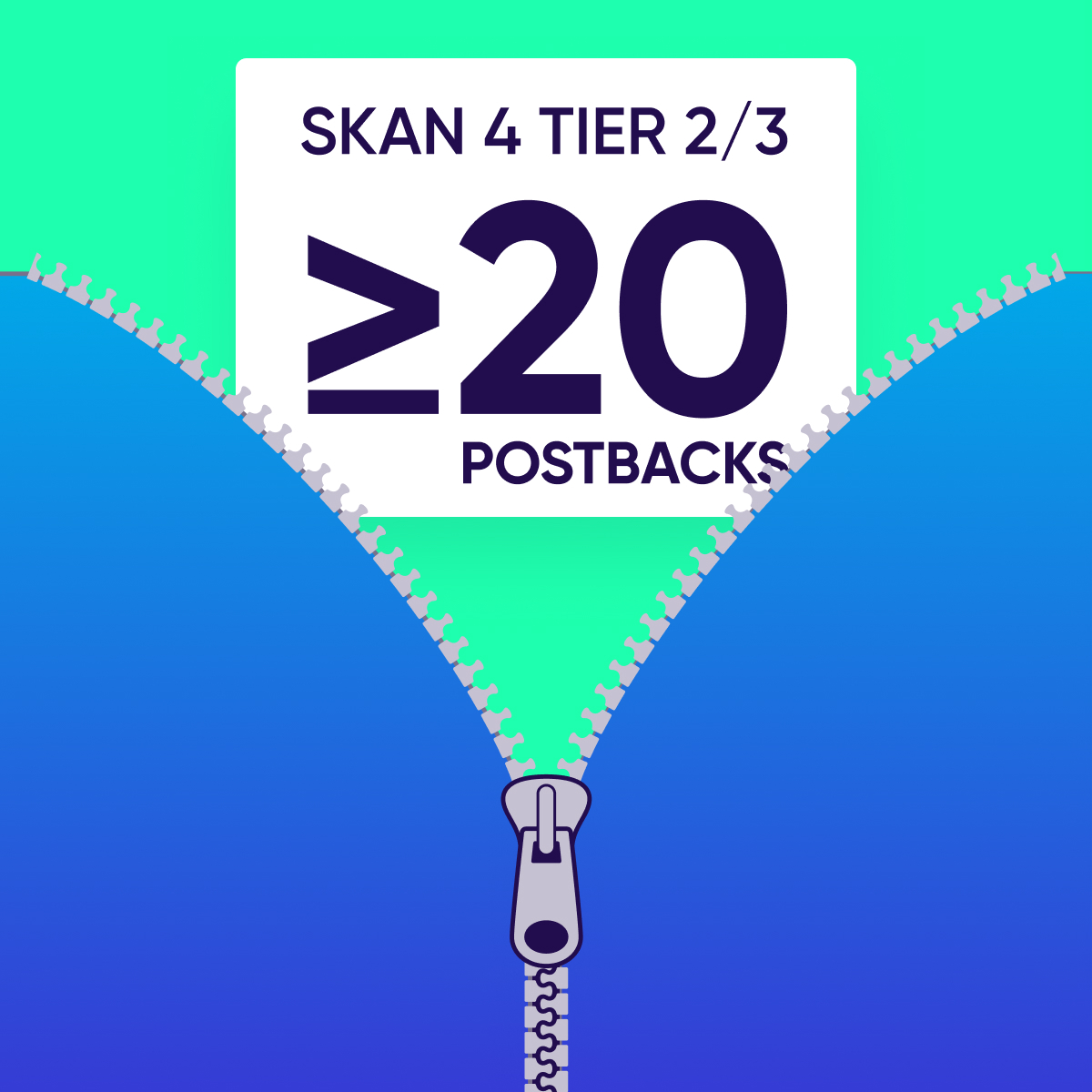
How many SKAN 4 postbacks are needed to maximize data signals, and other key data learnings

When Apple introduced SKAdnetwork (SKAN) 4 in October 2022, the industry was abuzz with excitement. For the first time, a significant SKAN upgrade was announced with more data being made available to app developers, primarily in campaign dimension reporting and longer post install windows.
But adoption was slow, particularly on the network side, which also meant apps were in no particular hurry to prepare.
Finally, in recent weeks, we’ve started to see adoption picking up speed. And we are now at a point where we strongly recommend advertisers to start configuring their SKAN 4 schemas, and for networks to finalize their implementation.
Because many apps and a number of leading networks have already done so, we now have sufficient data — 240 million SKAN 4 postbacks from over 2,000 apps between Aug 2023 to Jan 2024 to be exact — to offer 5 key data learnings which you don’t want to miss!
1) Adoption: 27% of postbacks coming in with SKAN 4
First things first, where are we at with adoption and more importantly what’s the pace as of late?
As of the end of January 2024, more than 1 in 4 SKAN postbacks (27%) are in version 4. On the app side, 1 in 3 apps with SKAN traffic have already mapped their SKAN 4 schemas — an 18% rise in the last month alone.
On the network side, it’s a mixed bag. Some leading networks like Unity Ads, X, and Mintegral are at 70% or above, while others like Moloco and Liftoff have already surpassed 50%. Google Ads is also ramping up quickly and is nearing 30%.
However, Meta and TikTok are still catching up and are currently in testing mode. We believe that when these networks ramp up, the tipping point — when SKAN 4 becomes a standard — will be reached.
Why it matters: SKAN 4 holds much promise compared to earlier versions as far as the data that is being offered is concerned. With adoption rising, marketers should make sure they are ahead of the competition, prepare their schemas now rather than wait until the tipping point is reached, and urge their media partners to support them with their own implementation.
2) 20 is the minimum number of installs per campaign, per app, per day needed for tiers 2 or 3
Apple employs the concept of crowd anonymity to describe the privacy-centric approach of SKAN 4 in providing attribution data. Apple determines the crowd anonymity tier for each postback and shares data accordingly, following the logical principle that greater numbers of installs result in more data being shared.
The following table sums it up:
| Postback 1 | Postbacks 2 &3 | |
| Crowd anonymity tier 0 | Source_identifier with 2 digits only | x |
| Crowd anonymity tier 1 | Source_identifier with 2 digits only Coarse-grained conversion value | Source_identifier with 2 digits only Coarse-grained conversion value |
| Crowd anonymity tier 2 | Source_identifier with 2, 3 or 4 digits fine-grained conversion value | Source_identifier with 2 digits only coarse-grained conversion value |
| Crowd anonymity tier 3 | Source_identifier with 2, 3 or 4 digits fine-grained conversion valuesource_app_ID/ source_domain | Source_identifier with 2 digits only coarse-grained conversion value |
According to our analysis, the golden number you need in order to hit tiers 2 or 3 — which is where you want to hit as per the table above — is 20 installs (postbacks) per campaign, per day, per app. The figure applies for both gaming as well as non-gaming apps combined with a 97% level of certainty.
This threshold was determined by the share of postbacks received in a certain range of postbacks per campaign (in increments of 20). If you seek 100% certainty you’ll need 120 installs but it’s not a recommended course of action.
In addition, we’ve found that 5 source app IDs and above will most likely result in hitting tier 3.
Why it matters: With privacy-driven data restrictions, you should take whatever you are given, or in other words to maximize data signals. In SKAN 4, that means making sure your daily campaigns are large enough to avoid getting a null value (tier 0), and then to ensure you’re getting tier 2 or 3 which include more data as the above table shows.
The fact that 20 installs are usually sufficient is very good news for marketers, especially for smaller developers or those who run many creative testing campaigns which are on a much smaller scale than their standard ones.
3) The number of postbacks with CV null has dropped by almost 70% in SKAN 4
The average number of postbacks per campaign per app coming in with a Conversion Value null has plummeted by nearly 70% in the first SKAN 4 postback compared to previous SKAN versions (reminder: a null value comes in when the privacy threshold defined by Apple is not met).
Although this drop was expected since Apple has opened up a middle ground in SKAN 4 with coarse-grained value in postback 1, it is a positive sign to see this number drop, de-facto. The fact that roughly 7% of postbacks came in with a null value in SKAN 3, created quite a bit of headaches for developers since Apple has never disclosed the actual privacy threshold.
Why it matters: Once again, maximizing data signals in the privacy age is key, and getting a conversion value with at least 3 coarse values to indicate quality is surely better than no values at all.
4) 82% and 76% of tier 2 and tier 3 postbacks contain a 4 digit source identifier, respectively
The table we displayed above shows why developers and marketers should aim for a tier 2 or tier 3 — there’s more data in postback 1, including far more granular campaign reporting with 4 digit source identifier.
The difference between 2 or 4 digit source identifiers is significant — from 100 to 10,000 reporting options. It should be noted that it’s up to the ad network (not the MMP or the advertiser) to utilize these options for greater reporting granularity.
We can see that 82% of postbacks in tier 2 contain 4 source_identifier digits, while 76% of postbacks in tier 3 also have 4 digits.
In gaming, postbacks in tier 2 are more likely to have 4 digits compared to those in tier 3, but in non-gaming, the opposite is observed.
Why it matters: To put it plainly, more digits equals more options for campaign reporting: across geo, placement breakdown (feed or reels for example), creative breakdown (which ad asset was shown), etc. It also demonstrates why the 97% confidence level we discussed in data point #2 above is good enough because tier 2 is sufficient to get you 4 digits in the vast majority of cases.
5) SKAN 4 conversion value schema mapping: what to measure and when
Despite the improvement in SKAN 4, the volume of data is still limited. Which is why choosing exactly what you need to measure is vital.
Analyzing the data based on the wisdom of the crowd of the first 2,000+ apps that have already configured their SKAN 4 schema can certainly give us a good direction. In SKAN 4, this is particularly important since there is logic behind choosing which events to measure and when so that we can configure our schema for different time frames of different postbacks.
For example, we can see a far greater share of mapping a ‘level complete’ event in games in postback 1 compared to postbacks 2 and 3. Perhaps the need to get data on early level completions is used to predict future value. Or in finance, a purchase event is far more popular later in the consumer journey.
Why it matters: Mapping your conversion value schema in SKAN 4 will help you measure what you need to meet your goals. And while the options remain limited, there are more possibilities to work and get more granular data that can help you build an optimal funnel.
Remember: SKAN 4 has its limits which SSOT can overcome
Apple has clearly listened to the industry when it designed SKAN 4 – the improvements are significant compared to SKAN 3.
Having said that, SKAN still does not solve for data silos, as installs from other sources are not deduped, data is still coming in with delays (up to 144 hrs), conversion values offer limited granularity, reporting is limited by Crowd Anonymity, and web-to app attribution is only supported in Safari.
To fill in the gaps, a single source of truth (SSOT) is required to maximize the performance of your iOS campaigns. It offers consolidated data, it includes organic, Apple Search Ads, and owned media, it offers modeled data for actual post-install metrics, it is not dependent on Crowd Anonymity, and it works on all browsers.
The bottom line
SKAN 4 presents lots of opportunities. But the devil is often in the details. Knowing these details — for example, how many installs are needed to get tier 2 or 3, or a 4 digit source identifier — can help you maximize the volume of data signals to fully optimize your iOS campaigns.
We strongly recommend not to wait for the remaining networks to finalize their implementation. Instead, get ahead and configure your SKAN 4 schema and urge your media partners to support your campaigns.





